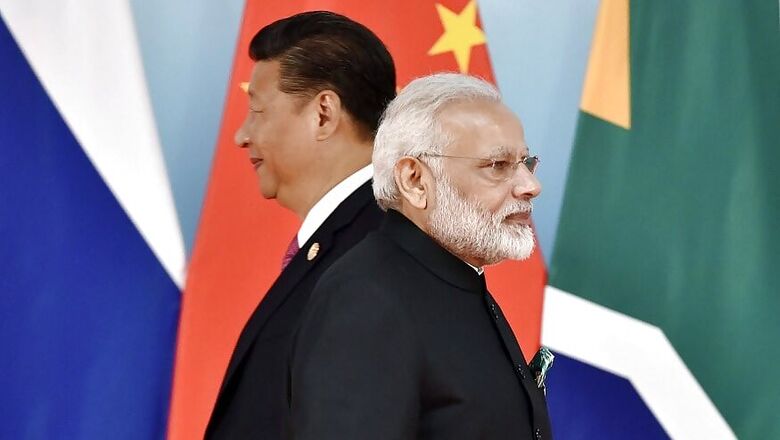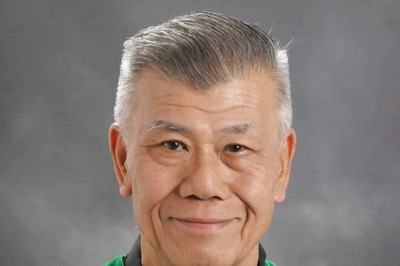
views
It’s been four months since the bitter India-China standoff began along the Line of Control. Multiple attempts at disengagement and for restoration of status quo ante have failed. The tricky, non-ending negotiations have only further exposed China’s expansionist mindset as well as damaged, and irreparably so, Beijing’s image as a modern nation preferring friends over lands.
The border skirmishes, resulting out of Chinese aggression, if not addressed quickly can drag India-China relationship back by 58 years. It can also negate all the gains made in strengthening bilateral ties since 1976, when New Delhi and Beijing decided to restore ambassadorial relations.
The ghost of the 1962 war is an embarrassing historical baggage the new generation wants to break-free from.
Successive Indian prime ministers, including Rajiv Gandhi, Atal Bihari Vajpayee, Dr Manmohan Singh and lately Narendra Modi, have made sincere attempts at peace. Yet, mutual distrust didn’t dissipate. Despite mechanisms being put in place, localised flare-ups along the borders continued.
Yet, despite differences, India and China cooperated on issues such as climate change and at multilateral forums such as the BRICS and SCO. It was felt that the growing business and economic relationship between New Delhi and Beijing would eventually overcome the strains and help settle the border dispute.
China’s inspiring economic growth has been a magnet for many an Indian youth. Like English, learning Mandarin was seen as a passport to the globe. Chinese cinema, culture and art were slowly gaining appreciation in India. Chinese cities like Beijing and Shanghai were seen as an affordable substitute to New York and London.
Trading relationship between the two neighbours too saw a sharp rise. China’s share in Indian imports went up from 1.93 per cent in 1996-97 to 16.40 per cent in 2017-18. From 2011-12 to 2017-18, barring 2012-13, China was India’s top trading partner.
From boardrooms to drawing rooms, China’s achievements were discussed with respect. Many believe that had the process of normalisation continued for another 15-20 years, India may even have agreed on some concessions on the border.
The free market reforms China introduced in 1979 while opening up foreign trade and investment made it a frontline country with a sharp trajectory of economic growth. Since then the country’s GDP growth averaged almost 10 per cent a year, according to World Bank estimates.
In the last 20 years, China added $13.13 trillion value to its GDP, more than U.S’s $11.12 trillion. Not surprisingly, the World Bank described China’s spectacular growth phase as “the fastest sustained expansion by a major economy in history.”
In just the last three decades, China has lifted over 850 million citizens out of poverty, a feat unparalleled in human history. Despite joining WTO late in 2001, by 2013, according to its own admission, China was the largest trading partner for 130 countries.
All these socio-economic achievements could have made China the true global leader at a time when America under Donald Trump was looking inwards.
However, the People’s Liberation Army’s actions beginning May 5 this year have exposed Beijing’s charade of friendship.
A closer look exposes the true reason for China’s misdemeanours under Xi Jinping. Chinese expansionist designs began way back in 2015 with the launch of the China-Pakistan Economic Corridor (CPEC), a flagship of China’s Belt and Road Initiative. The corridor was built through Gilgit-Baltistan of the PoK despite India’s multiple objections and protests.
The CPEC is part of China’s grand designs to cut logistics costs for its products to markets in West Asia, Europe and Africa. Securing the route is thus of paramount importance to China.
But India of 2020 is remarkably different from the India of 1962. We were barely a decade and a half into independence then. Our resources had been spent in trying to lift a great mass of people out of abject poverty. Our defences were relatively weak. But today, the country is more than confident that it can challenge the might of China. India is prepared to fight a long-drawn battle of grit and determination in multiple theatres and geographies.
New Delhi has so far played its cards well. Suddenly, the Tibetan issue is centre stage. By using the covert Special Frontier Force, comprising mostly Tibetan refugees, for the Pangong Tso operation, India has sent out a very clear message to China that the issue of Tibet remains unsettled. Further, Tibetan guerrillas outdoing PLA would surely not be lost upon the Tibetans craving for independence from China. A subtle message from New Delhi to Beijing also goes out that there may be a rethinking on ‘One China Policy’ and that their imprudence could well give a fresh lease of life to the Free Tibet cause.
China’s trust deficit with the world is widening. The West has a long list of grudges against China, running from its opaque and unfair trade practices to actions in the South China Sea and the Pacific waters, where it is challenging the American might. Beijing’s failure on Covid-19 front is just the latest point of discord. Furthermore, China’s authoritarian streak and blatant expansionism attempts have already alarmed the freedom loving democracies and made them join hands.
The border crisis has stoked a rising tide of nationalism both in India and China. The Indian government cannot afford to be seen as going soft on an adversary like China. Noting the change in India’s tactic towards China, scholars Anit Mukerjee and Yogesh Joshi commented that New Delhi has moved from a strategy of ‘deterrence by denial’ to ‘deterrence by punishment’.
China clearly wants to force India to its terms of peace by opening up multiple fronts along the LAC. Beijing is also feeling that a long drawn out faceoff would put India at a disadvantage given the asymmetry in the economy between the two countries.
The Mandarins guiding Xi Jinping are perhaps under the impression that China is in a better position to settle to border issue today than wait for India’s further rise which may eventually weaken their bargaining power.
The irony is that all this is playing out in a year which celebrates the 70th anniversary of diplomatic relations between India and China.
















Comments
0 comment